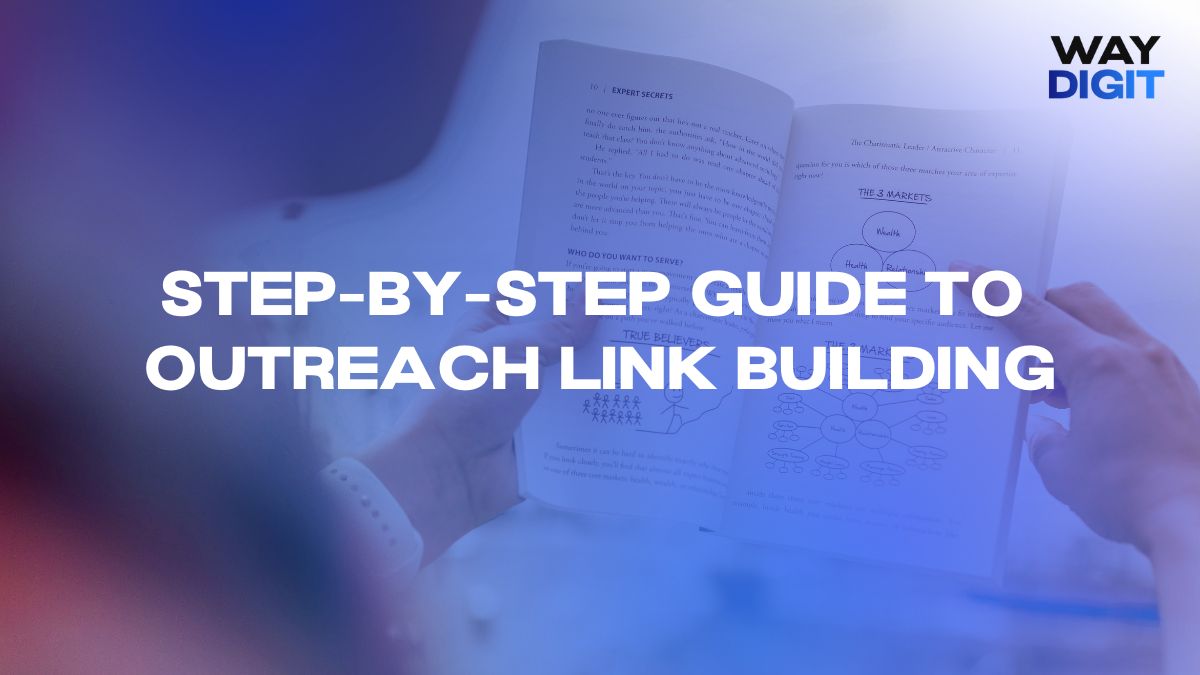In the ever-evolving digital landscape, acquiring high-quality external links from reputable sources is crucial for enhancing your website’s search engine ranking and visibility. These links, as highlighted by Google’s guidelines, can significantly influence your site’s perceived value and relevance. This guide delves into the strategies for securing outreach links, using a UK-based investment company as a case study.
Understanding Outreach Link Building
Outreach link building involves acquiring backlinks by reaching out to other websites and negotiating link placements. This strategy requires establishing professional relationships with web administrators or content managers to secure valuable links.
The Power of Relationship-Based Link Building
This method, often referred to as “white hat link building,” focuses on earning high-quality backlinks from reputable, non-spammy sites. Unlike link exchange schemes, this approach emphasizes natural link acquisition, which aligns with Google’s guidelines. Here’s why this method is effective:
- Targeted Placements: Links are placed on relevant, high-quality sites within unique and useful thematic publications.
- Enhanced Visibility: Backlinks contribute to better search engine rankings and drive additional traffic from referring domains.
- Selective Link Acquisition: High-quality sites that selectively place links, rather than selling them en masse, are preferable. This minimizes the risk of penalties.
- Flexibility: Direct communication with site administrators allows for potential adjustments to the posted content or links.
- Investment: Obtaining outreach links requires more effort and a higher investment compared to some other link-building methods.
Nine Essential Steps for a Robust Link Building Strategy
- Identify Key Search Queries: Compile a list of search queries to find potential link-building sites.
- Gather Potential Sites: Analyze search results and competitor link profiles to identify target sites.
- Evaluate Relevance and Quality: Assess the relevance and quality of the identified sites.
- Collect Contact Information: Find email addresses for webmasters or site administrators.
- Request Pricing and Placement Terms: Inquire about the cost and terms for placing links.
- Select Sites Based on Metrics: Choose sites that meet your quality and budget criteria.
- Create Tailored Content: Develop content that aligns with the requirements of the chosen sites.
- Place and Verify Links: Ensure that the links are correctly placed and meet agreed-upon specifications.
- Monitor and Analyze Results: Evaluate the impact of the links on your site’s performance.
Effective Keyword Research and Site Discovery
Start by generating a list of relevant keywords to find suitable platforms. Avoid commercial terms and focus on markers that accurately describe your site’s niche. Utilize tools such as Google Keyword Planner or Serpstat for keyword discovery.
Exploring Potential Link Sources
Leverage tools to extract site data based on your search terms. Use advanced search operators and settings to refine your search results, ensuring you capture the most relevant UK-based sites.
Competitor Analysis for Link Opportunities
Analyze competitors’ backlink profiles to uncover potential link sources. Tools like Serpstat and Ahrefs can help identify referring domains used by competitors.
Assessing Site Quality and Relevance
Google emphasizes the quality of links over quantity. Evaluate potential sites using various criteria, including traffic, domain rating (DR), and link ratios. Focus on sites relevant to your target audience and region.
Analyzing Traffic and Domain Metrics
Examine site traffic, source ratios, and domain metrics to gauge the quality of potential linking sites. Tools like Netpeak Checker, Serpstat, and SimilarWeb can assist in this analysis.
Evaluating Domain Rating and Backlink Profiles
Domain Rating (DR) from Ahrefs can indicate a site’s backlink strength. Assess DR and compare it with other sites, ensuring you select domains with high-quality backlink profiles.
Analyzing Inbound and Outbound Links
Prioritize sites with a higher ratio of inbound to outbound links to avoid potential search engine penalties.
Manual Review of Referring Domains
Conduct a detailed manual review of potential sites, including content relevance, site design, and backlink quality.
Crafting an Effective Outreach Email
Compose a clear and professional outreach email to webmasters. Specify the purpose of your request, including details about link placement, pricing, and content requirements.
Selecting Sites Based on Metrics and Cost
Evaluate sites based on a balance of price and quality. Categorize sites into performance and price brackets to optimize your link-building strategy.
Creating Tailored Content
Prepare content that meets the specific requirements of each site. Provide detailed instructions for your copywriter to ensure the content aligns with the site’s guidelines.
Finalizing Link Placement
After placing your content, verify that all technical requirements are met, including link attributes and placement specifics. Address any issues promptly with the site representative.
Evaluating Link Building Outcomes
Two to three months post-placement, review the impact of the links on your site’s rankings and traffic. Use tools like Google Search Console and Google Analytics for comprehensive analysis.
Conclusion
Outreach link building, when executed thoughtfully, is a powerful method for enhancing your site’s authority and traffic. By focusing on high-quality sites and tailored content, you can achieve significant improvements in search engine rankings and overall visibility.


Hi, this is a comment.
To get started with moderating, editing, and deleting comments, please visit the Comments screen in the dashboard.
Commenter avatars come from Gravatar.